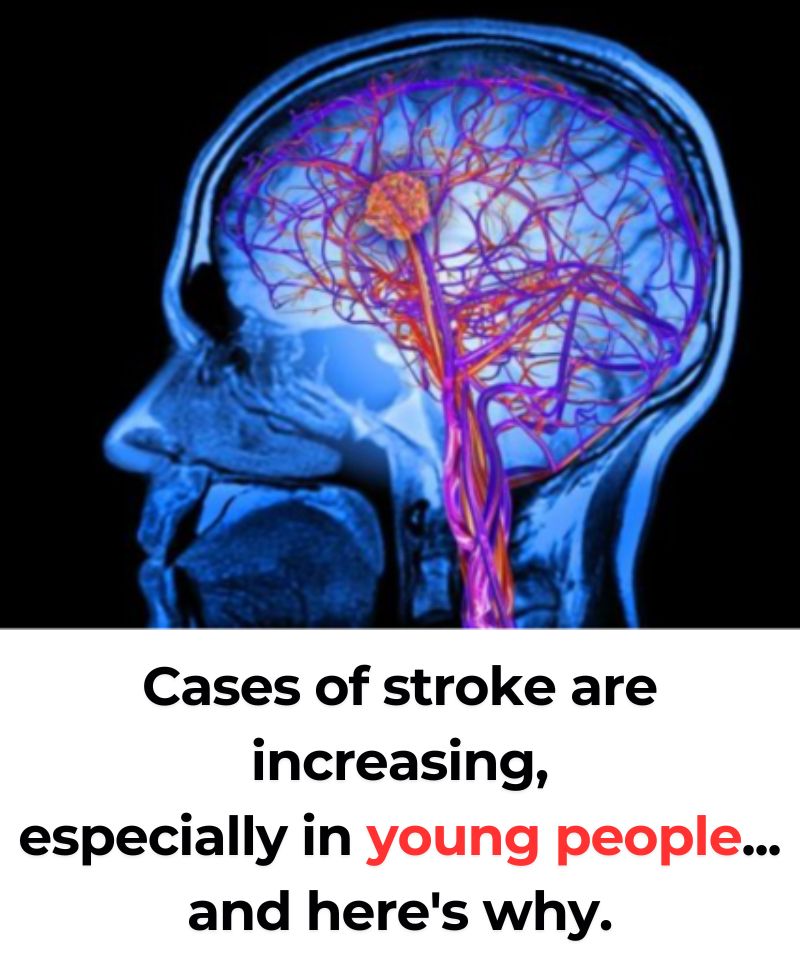
Strokes have long been linked to older age, but neurologists across the globe are now raising concerns over a growing number of cases in younger people. Recent data reveals that this trend is accelerating—and it’s becoming increasingly alarming.
This shift in stroke demographics calls for a deeper understanding of its emerging causes in younger populations and a revamp of current prevention strategies. Recognizing the issue early is essential to avoid a significantly heavier social and economic burden in the years ahead.
A Troubling Trend: Rising Stroke Cases in the Young
According to a comprehensive global analysis published in The Lancet Neurology, the rate of strokes in individuals under 55 has risen from 1990 to 2021, while remaining unchanged in older adults. This increase is especially pronounced in low- and middle-income regions.
In the U.S., the CDC reported a 15% rise in stroke prevalence among adults aged 45–64 between 2011 and 2022. Among those aged 18–44, the increase was 14.6%.
A review in the Journal of Clinical Medicine states that individuals under 50 now account for 10–14% of all stroke cases in both the United States and Europe—and the numbers are steadily climbing.

Much of this surge is explained by poorly controlled high blood pressure. An NHANES-based cross-sectional study found that 83.7% of American adults with hypertension exceed 130/80 mmHg. Worryingly, people under 45 are the least likely to be aware of their elevated blood pressure (Richardson et al., 2024).
What’s Causing the Rise in Stroke Risk?
Unmanaged High Blood Pressure
High blood pressure remains the strongest predictor of stroke. When it begins in early adulthood, the cumulative vascular damage increases long-term risk. Many younger adults don’t undergo routine medical exams, which leads to undiagnosed and untreated hypertension.
Obesity and Metabolic Issues
Obesity rates among adults aged 18–39 have doubled since 1999. Visceral fat promotes chronic inflammation, lipid abnormalities, and insulin resistance—factors that speed up the development of cerebral atherosclerosis.
According to GBD2021, elevated body mass index accounts for an 88% increase in disability-adjusted life years. The current metabolic health crisis is a direct contributor to stroke cases in younger populations.
Smoking and Drug Use
Although traditional smoking has declined, the use of e-cigarettes and vapes has introduced nicotine to younger users. Long-term exposure damages arteries and promotes clot formation.

In addition, recreational use of cocaine, amphetamines, and synthetic cannabis can cause vasculitis and sudden hypertensive spikes, all of which are known to trigger hemorrhagic strokes in young adults.
Unique Stroke Triggers in Younger Individuals
Migraine with Aura
People suffering from migraine with aura are at double the risk of experiencing an ischemic stroke. It’s believed that cortical depression from migraines disrupts blood vessels and increases platelet activity (Bukharie et al., 2023).
This risk climbs when paired with smoking or birth control use, making awareness and early intervention essential.
Pregnancy and Hormonal Contraceptives
Pregnancy causes physiological changes such as increased blood volume and clotting tendency. The postpartum phase, marked by shifting blood dynamics, also raises stroke risk by threefold.
Estrogen-progestin contraceptives may further elevate this risk, particularly in those with migraines or clotting disorders—highlighting the need for personalized medical advice.
Heart Conditions and PFO
Roughly one-third of unexplained strokes in people under 55 are linked to a patent foramen ovale (PFO), a small opening in the heart. This allows blood clots to bypass the lungs and reach the brain unexpectedly.
Diagnosis via echocardiogram and closure procedures have proven effective in lowering recurrence, offering a targeted treatment strategy.
Arterial Dissection and Neck Injuries
Intense physical activity, chiropractic adjustments, or minor trauma can tear artery linings in the neck. Dissection is the primary cause of stroke among those under 45.
Early imaging through CT angiography or MRI, followed by prompt anticoagulant therapy, can prevent serious brain damage.

Autoimmune and Clotting Disorders
Conditions like lupus, antiphospholipid syndrome, and sickle cell disease increase clot risk. These patients benefit from close monitoring and preventative neurological care.
Environmental and Social Contributors
Education and Socioeconomic Background
CDC findings show that stroke risk is highest among individuals without a high school diploma. Limited education reduces access to health knowledge and quality care.
Pollution and Heat Exposure
Chronic exposure to fine particulate matter (PM2.5) harms blood vessels. GBD2021 data also links extreme temperatures—especially in densely populated cities—to a 72% rise in stroke-related disease burden.
Healthcare Access and Delayed Diagnosis
In rural areas, delays in recognizing stroke symptoms or reaching stroke care centers can lead to missed treatment windows. The result is worse outcomes and prolonged disability, reinforcing cycles of poverty and health decline.
The Long-Term Impact of Stroke in the Young
Suffering a stroke before age 40 often results in decades of physical, emotional, and financial challenges. Survivors may deal with mobility issues, speech disorders, or chronic conditions like epilepsy.
Mental health concerns—including depression, anxiety, and identity struggles—are common. Economically, the burden includes extended rehabilitation, lost productivity, and increased strain on healthcare systems.
Family members often take on caregiving responsibilities, which can create lasting emotional and financial stress for spouses and children alike.
How to Reduce the Risk
- Incorporate regular blood pressure and cholesterol screenings into young adulthood, ideally before age 30
- Encourage plant-based diets, daily physical activity, and tobacco-free environments
- Promote stroke prevention programs in schools and workplaces
- Leverage mobile apps to help monitor heart rate, blood pressure, and medication compliance, especially in underserved communities
Conclusion
The increasing rate of strokes among younger people reflects a faster-than-expected shift in global health patterns. Traditional risk factors—like hypertension, obesity, and lifestyle choices—are now appearing earlier in life.
Understanding the broad range of causes, from metabolic conditions to specific medical triggers like migraines or PFOs, is essential for designing effective prevention.
Now is the time for action—through evidence-based public health policies, widespread education, and accessible healthcare—to stop this growing crisis and protect future generations from preventable disability.

















